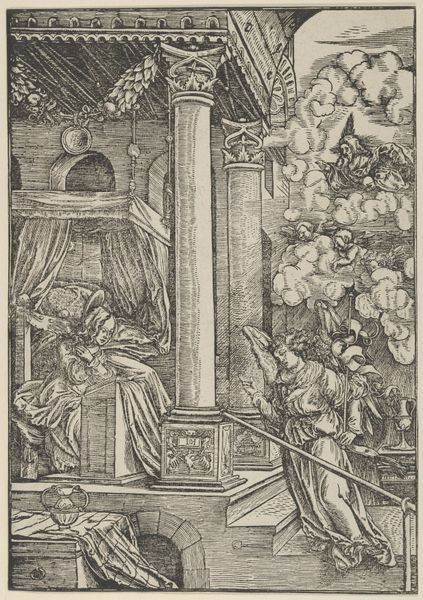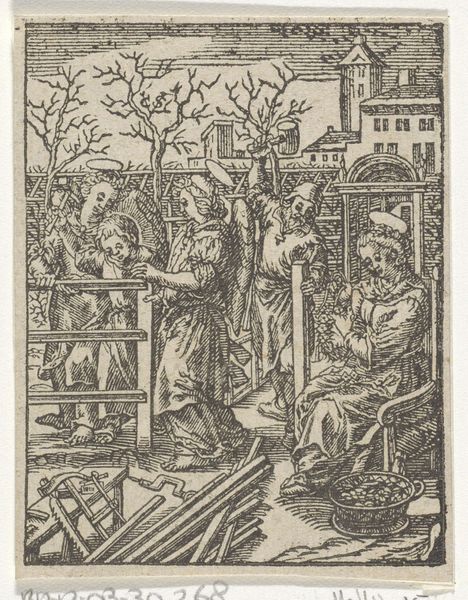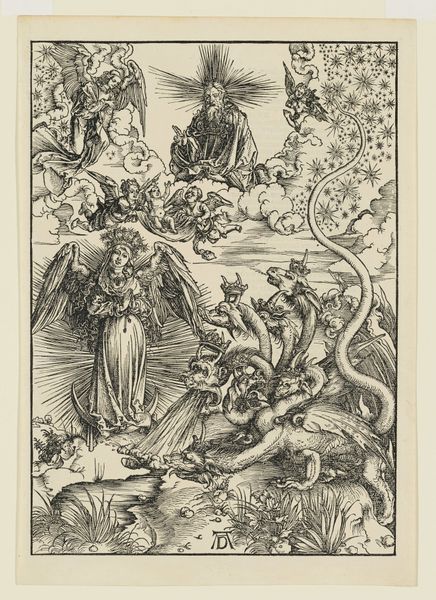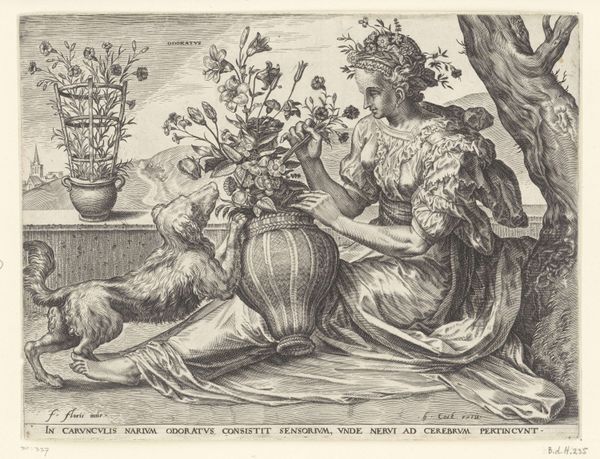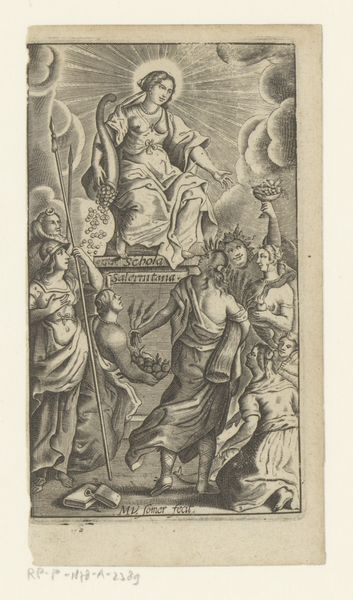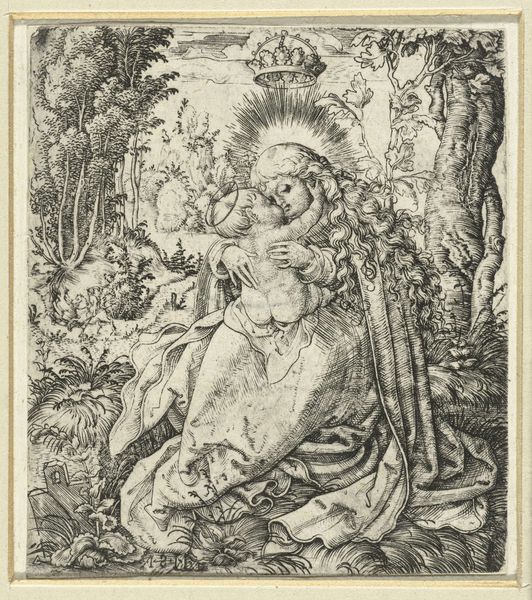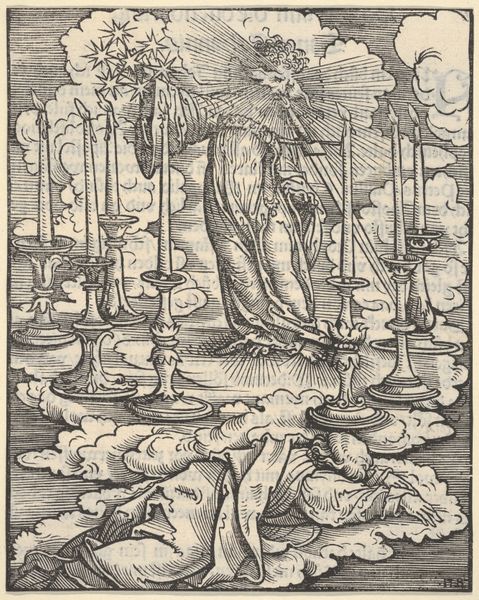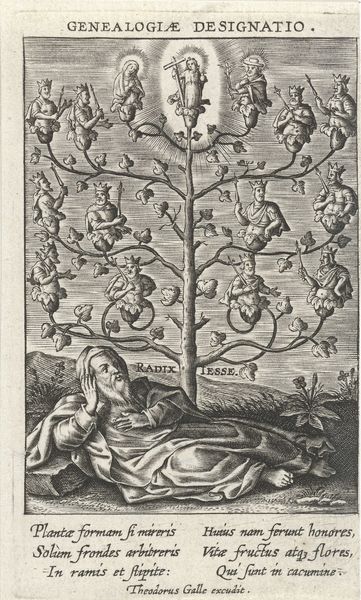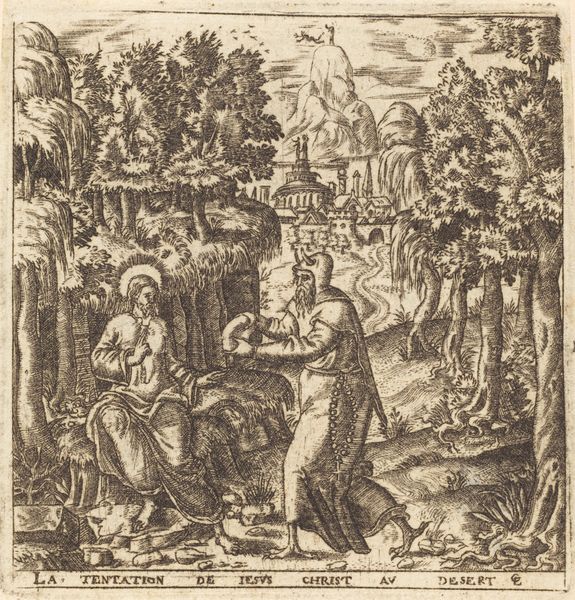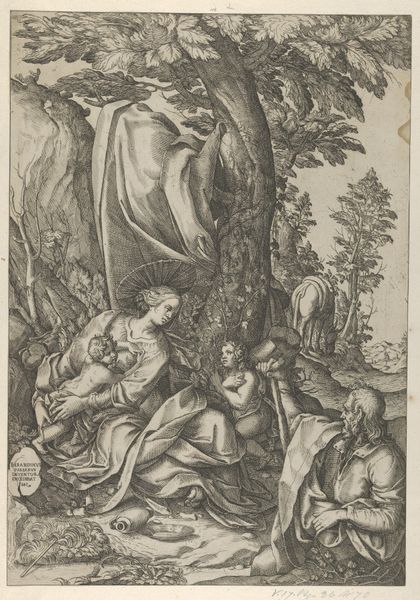
drawing, print, ink, engraving
#
drawing
#
narrative-art
#
pen drawing
# print
#
pen illustration
#
pen sketch
#
figuration
#
ink line art
#
11_renaissance
#
ink
#
line
#
history-painting
#
northern-renaissance
#
engraving
Dimensions: height 311 mm, width 222 mm
Copyright: Rijks Museum: Open Domain
Curator: Let's take a closer look at this engraving entitled "Pyramus and Thisbe," dating back to 1505. Editor: Oh, my. Talk about dramatic! It’s all happening here, isn’t it? Dark and dense. Very evocative. Curator: Indeed. The piece is held here at the Rijksmuseum and is attributed to Arthur F. Krüger, depicting the tragic tale of two lovers from Ovid's Metamorphoses. The sharp lines and high contrast are characteristic of engravings from the Northern Renaissance. We see Thisbe discovering Pyramus dead beneath the mulberry tree. Editor: I find the density of the foliage almost claustrophobic. See how the figures are framed –almost trapped– by nature, enhancing the inescapable doom of their story. There's a real immediacy about the tragedy—not idealized but deeply human. Curator: The artist certainly draws on a visual tradition where printmaking served to disseminate classical stories for moral and educational purposes. Consider the socio-cultural context—images such as these reinforced the dangers of disobedience, and the overwhelming power of fate within communities of the time. Editor: Fate's a beast, alright! The composition has such raw energy, a swirling intensity in the water... Even the bizarre crescent moon in the upper right is disconcerting, lending a chaotic element to this ill-fated rendezvous. It’s not pretty, but powerfully expressive! Curator: It certainly reflects the historical relationship between artistic production and public didacticism. How art was enlisted to convey stories that served to illustrate shared beliefs about ethics, tragedy, and consequence. Editor: You know, despite the clear narrative of despair and finality, I still sense a thread of empathy here—a shared feeling about love's potential to push us to extreme and even irreversible places. That’s its lasting hook. Curator: Ultimately, an encounter with an artwork like "Pyramus and Thisbe" not only enhances our knowledge about classical stories, but also encourages consideration of how they function and circulate within various historical, social, and institutional landscapes. Editor: Yes, beyond that didacticism, there’s something about witnessing love gone wrong that… unfortunately, still speaks loudly today. Thanks for the gloomy tour.
Comments
No comments
Be the first to comment and join the conversation on the ultimate creative platform.
